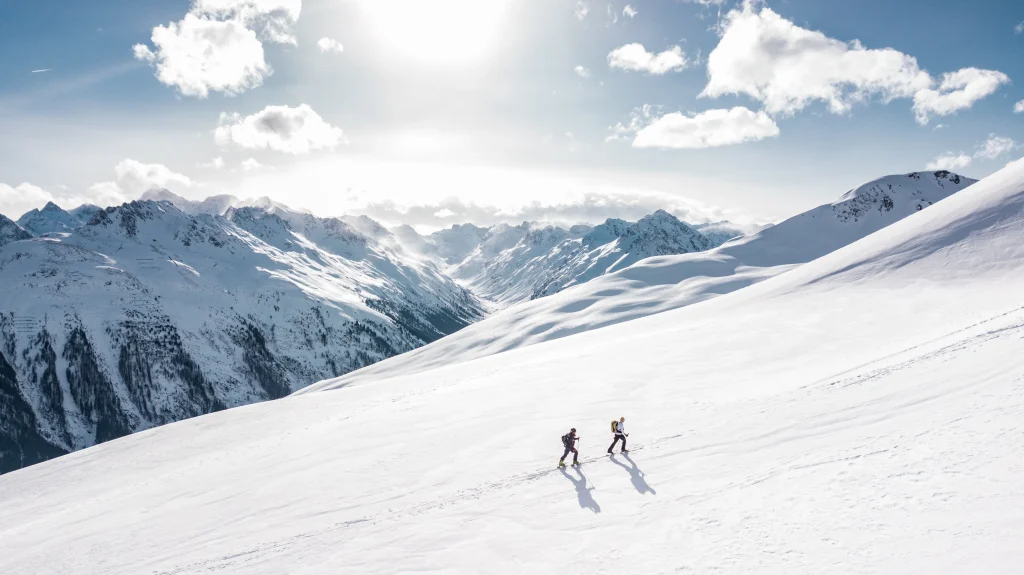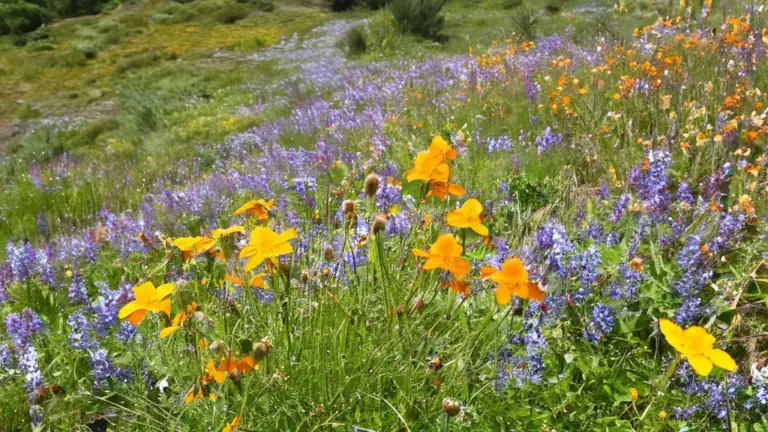What Is Hiking: Exploring Types, Benefits, and History | Hiking Guide
Is your spirit up for an adventure in the great outdoors? Hikers who have pondered the question, “What is hiking?” have come to the correct place. An energizing pastime, hiking entails walking great distances along trails or roads through scenic wilderness areas, where one can learn about the area’s history and culture.
Hiking provides a wide variety of alternatives for all types of outdoor lovers, from small half-day trips to epic journeys spanning over 20 days.
In this article, we will explore what hiking is, the different types of hiking, and the benefits of hiking. Strap on a pair of hiking boots hit the trails, and see for yourself what all the fuss is about.
What Is Hiking?
Hiking is an activity of moderate difficulty involving walking long distances, typically on trails or paths. It enables people or groups of all sizes to explore natural landscapes and immerse themselves in a nation or region’s culture and history. Hiking activities can range from a half-day program to lengthier trips lasting over 20 days.
Although “hiking” and “trekking” are sometimes interchangeable, their durations typically vary. Trekking is a term that denotes longer programs that last a week or longer instead of hiking, often associated with shorter programs.
Hiking offers several benefits, including interacting with local people and learning about their distinctive cultures. Longer trekking trips frequently include contacts with locals, allowing visitors to sample local cuisine and learn more about the local customs. Hiking connects the trail with the populace, fusing outdoor adventure with cultural exploration.
History of Hiking

Hiking has a long history dating back to when mountains were feared and shunned rather than admired. However, the UK’s Romanticism movement in the late 18th century had a significant effect.
oets and authors started to seek attractive areas like the English Lake District and the Scottish Highlands as a retreat from industrial towns.
Similar patterns arose throughout Europe, with vacationers flocking to locations like the Alps. The first ascent of Mont Blanc, the highest mountain in Western Europe, in 1786 signaled the start of a century that saw daring adventurers ascending significant Alpine peaks.
These glacial giants piqued the public’s imagination with tales of their bravery and images of breathtaking scenery.
Through the Transcendentalist movement, the influence of European Romanticism reached the United States around the beginning of the 19th century. The movement placed a strong emphasis on protecting wilderness areas while still allowing people to enjoy them freely. National parks started to appear as a result all over the world.
The world’s first national park, Yellowstone National Park, was created on March 1, 1872, paving the way for preserving natural areas and enjoying outdoor activities.
Types of Hiking
01. Short Hikes
From half-day to full-day programs, trekking offers versatility. These short treks offer a quick opportunity to reconnect with nature and are a wonderful addition to quick excursions. Additionally, multi-day hiking programs might include short hikes.
02. Long Hikes
Some lengthier hikes and treks last 12 days and cover significant distances, frequently tens of kilometers, for those seeking more comprehensive activities. These programs frequently involve overnight stays in mountain huts, tents, or camps. Long hikes offer the chance to discover remote locations and combine cultural and environmental experiences.
03. Day Hikes
A day hike is a brief outing that lasts all day. They are perfect for anyone or any group who wants to enjoy trekking without spending the night camping. Day hikes allow you to explore beautiful routes, take in breathtaking views, and finish the day by returning to where you started.
04. Overnight Hikes
An overnight hike typically entails staying in a campsite or other allocated lodging for one or more nights. These excursions allow participants to explore nature deeply while they camp out beneath the night and enjoy the peace of awakening to the beauty of the environment.
05. Weekend Hikes
Weekend hikes are planned to make the most of the hiking experience in a short amount of time. They often last two to three days allowing hikers to spend the weekend getting away from the city and experiencing nature. These walks are popular for outdoor enthusiasts seeking a rejuvenating escape from their everyday routine.
What’s the Difference Between Hiking and Walking
Hiking and walking both entail putting one foot in front of the other, but there are significant differences between the two.
While hiking on trails in rural or wilderness locations, walking is frequently done on paved or well-traveled paths in metropolitan settings.
Compared to walking on flat surfaces, hiking paths can have more difficult terrain.
Because hiking lasts longer and is more dangerous in isolated locations, it usually requires extra supplies.
Exploring and taking in the natural scenery are the main goals of hiking, which is a more deliberate and organized activity.
When hiking, specific clothing and equipment to manage abrasive terrain and changing weather conditions are frequently needed.
What Are the Benefits of Hiking
Physical Fitness
The cardiovascular system, endurance, and muscles can all be strengthened through hiking. It uses the body’s muscles, including the legs, the core, and the upper body, to move through different terrains and elevation variations.
Mental Well-Being
Numerous mental health advantages of hiking exist. Being in nature and away from the pressures of everyday life can lessen tension, ease anxiety, and lift one’s spirits. The tranquil setting and clean air encourage rest and renewal.
Nature Relationship
Hiking offers an opportunity to interact with nature. It enables people to take in the splendor of sceneries, see wildlife, and take in the peace of natural areas. It has been demonstrated that having a relationship with nature improves mental health and cultivates feelings of awe and thankfulness.
Weight Control
Exercise that is good for managing weight is hiking. It aids in calorie burning and the maintenance of healthy body weight. Hiking also tests the body and increases calorie expenditure due to the varied terrain and elevation fluctuations.
Joint Wellness
Compared to high-impact sports like jogging, hiking is a low-impact sport that is easier on the joints. It can lead to better joint health and mobility by strengthening the muscles around the joints and enhancing joint flexibility.
Social Engagement
Hiking offers social connection and solitary enjoyment for thought and alone time. Hiking with friends and family or joining hiking groups promotes relationships by providing interaction opportunities, sharing experiences, and companionship.
Adventure and Discovery
Hiking enables people to travel to new places, find undiscovered treasures, and explore new pathways. It gives the action a sense of adventure, curiosity, and discovery, enhancing its thrill and freshness.
Ecological Awareness

Hiking promotes environmental awareness and the desire to preserve and protect wilderness areas. Immersion in nature helps people become more environmentally conscious and promotes sustainable practices to protect these priceless resources.
Better Sleep
Better sleep patterns can result from regular exercises, like hiking. During hikes, the mix of physical activity, exposure to natural light, and mental relaxation might encourage more restful and reviving sleep.
Absorption of Vitamin D
Hiking exposes the body to sunshine, which encourages the production of vitamin D. For the immune system, bones, and general health, adequate vitamin D levels are crucial.
Conclusion
In conclusion, what is hiking? Hiking is a popular outdoor activity and a valuable means of connecting with nature, exploring new places, and immersing oneself in different cultures and histories. There are hikes for everyone to enjoy, ranging from quick day hikes to lengthier excursions lasting several weeks.
With a long history, hiking has been made more popular by the 18th-century Romanticism movement and the creation of national parks.
Numerous advantages include improved physical and mental health, a closer connection to nature, weight management, joint health, social interaction, exploration and adventure, ecological awareness, better sleep, and vitamin D absorption.
Hiking is a fulfilling sport that enables people to escape the hustle and bustle of daily life and reconnect with the natural world, whether for health advantages, adventure, or the enjoyment of natural beauty.
Put on your hiking boots, explore the trails, and discover the wonders of hiking for yourself.
FAQ
What is the importance of hiking?
Hiking lowers the risk of heart disease, stroke, high blood pressure, high cholesterol, and several malignancies, making it essential for maintaining good health. It is a weight-bearing workout that promotes bone health and muscular growth. Hiking also helps with weight management.
What type of exercise is hiking?
A vigorous aerobic activity, hiking is categorized as such. It boosts the body’s aerobic system and simultaneously works the muscles and bones. Hiking’s incline and decline make the exercise more intense, which is good for the heart. Over a prolonged amount of time, hiking engages and strengthens the leg muscles.
How To Pack A Hiking Backpack: The Ultimate Guide to Efficient and Organized Packing

